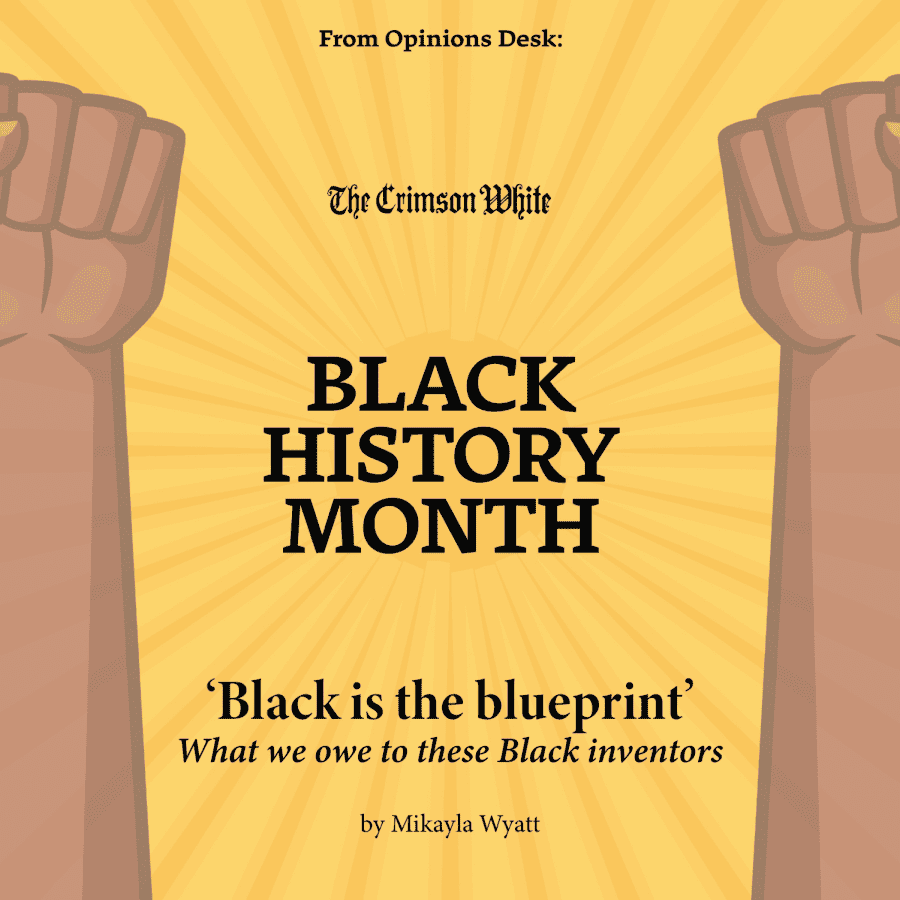Opinion | Black is the blueprint
In this ‘More than a month’ installment, we pay homage to forgotten heroes.

More stories from Mikayla Wyatt | @minimalistmikk
As I broke my social media hiatus and gave into my Twitter addiction, I discovered a thread that excited me. But it also disappointed me.
Jasmine Grant, an undergraduate student at Howard University, tweeted a thread highlighting the areas Black people have created and established. It’s exhilarating to learn more about my history, Black history. But the thrill always comes with a sense of guilt.
I began to place blame on myself for my lack of knowledge, only to ponder where I was supposed to learn my history, Black history. I learned some from family, but they were, and still are, working class individuals, often too busy to ponder on the past.
But the responsibility to teach our history, Black history, shouldn’t be on them. Why was I, and so many other Black individuals, neglected this information in the very place we were sent to learn? Why were my white counterparts offered the opportunity to learn their history, uncensored, while mine remains in the shadows of secrecy?
Black history deserves recognition even if educational institutions, such as The University of Alabama, fail to acknowledge it beyond the month of February (and to say that the University acknowledges Black History Month is generous, given its poor advertising of slated programming, and crickets from President Stuart Bell).
The series “More Than a Month” aims to reclaim the ways in which Black history and ongoing Black struggles are portrayed.
So let’s begin with paying homage to some notable Black creators and inventors.
Black queer men created house music.
Three Black queer men by the names of Larry Levan, Frankie Knuckles and Ron Hardy launched the house music genre in New York City and Chicago. Their genre discovery became popular all over the world, which led to the inspiration of other musical innovations such as modern deejaying, sampling music, remixes and even electronic dance music.
The notorious airbrush T-shirt design was spearheaded by Black men.
They went by the Shirt Kings which included three Black men known as Phade, Kasheme, and Nike. As one of the most influential hip hop group designers, they invented the airbrush t-shirts and created exclusive tees for prominent hip-hop figures such as Jay Z, Rakim and L.L. Cool J.
A Black doctor invented blood banks.
Dr. Charles Drew introduced the world to the process of preserving blood plasma to use for blood infusions. He also aided in the organization of the first blood drive – an action that saves millions of lives yearly. He didn’t stop there. Dr. Drew shared his knowledge with the students he taught at two distinguished historically Black universities, Morgan State University and Howard University.
And credit the lifesaving pacemaker to a Dr. Otis Boykin.
The prominent Dr. Otis Boykin not only invented the control unit for the pacemaker, but is responsible for patenting a resistor that could withstand various temperatures and pressures. This knowledge and art of creation, specifically the resistor, led to reduction in the cost to produce common devices such as TVs and computers.
The probe that revolutionized cataract surgery was created by a Black woman.
Dr. Patricia Bath is the brilliant inventor of the laser-phaco laser used to correct cataracts. She continued to establish her place as a trailblazer by becoming the first Black woman to secure a medical patent. Through her work she was able to correct and refine the visions of patients domestically and internationally.
Rollercoaster fanatics, thank Granville Woods.
Granville Woods is responsible for the invention of the first electric rollercoaster, as well as the first electric railway. His commitment to electric advancement led him to obtain patents for over 50 electric devices.
And let’s not forget about the father of logo-mania.
The prodigious title of ‘father of logo-mania’ belongs to the eminent Dapper Dan. He took the logos from designer and luxury brands and used them to create furniture, apparel and more. He still remains a staple individual in the fashion industry. Thank him for the inspiration of your beloved Louis Vuitton handbag.
Black history is about more than enslavement. It’s about more than the struggles faced in the past and present day.
Black is strong. Black is original, authentic and is the racial identity of geniuses – geniuses who fail to get the recognition they deserve, while others reap profits from their knowledge. It was said best by Beyonce Knowles herself: Black is the blueprint.



